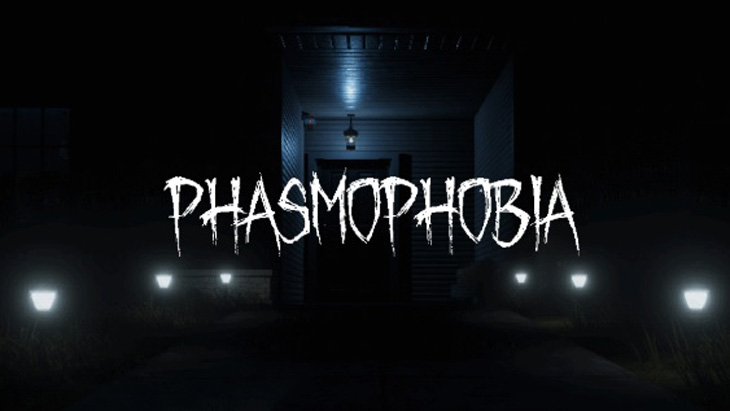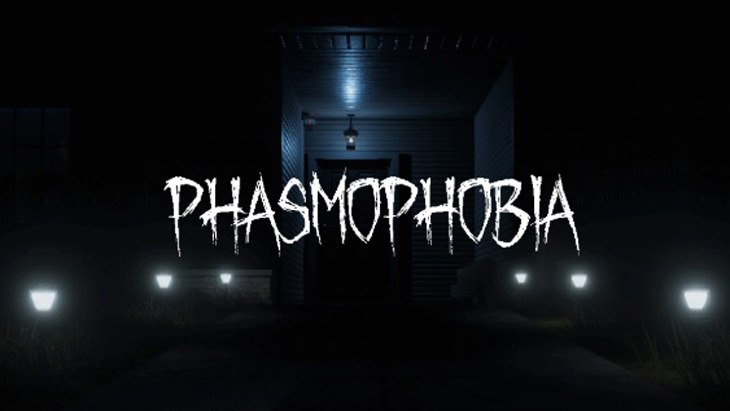
Games designed in Unity and similar engines are notorious these days for being quick and easy to make. Despite how common the engine is as a tool however, a unique gameplay idea can shine through with any engine.
Phasmophobia is the latest unexpected multiplayer game to go viral in a year full of such games. Taking the concept of professional ghost hunters, and making a survival horror game that tempers a player’s greed with fear. Phasmophobia is a game perfect for the Halloween season.
While normally we would wait to review a game that’s in Early Access, due to the game’s popularity and development status we decided to formally review it.
Phasmophobia
Developer: Kinetic Games
Publisher: Kinetic Games
Platforms: Windows PC
Release Date: September 18, 2020
Players: 1-4
Price: $13.99
First off, we need to talk about the graphics. Much of Phasmophobia uses stock assets. Player models are stiff and bland, and there’s only a few to choose from. In contrast, the ghosts use much more impressive models with gruesome textures. Detail is put into the design of haunting locations, with random furniture and objects placed around to create a deeper sense of immersion.
The largest flaw would have to be the lighting in the game which has a multitude of issues. The flashlights of other players don’t reflect the position that other players see. For instance, when shining a UV flashlight on some ghost fingerprints, everyone else may not see it and instead see your beam a meter to the left.
The lights from other flashlights are also uninterrupted during “hunt events”. When the ghost is actively hunting, lights will flicker both inside the building, and including flashlights. However when a friend is holding a flashlight, you do not see their light flicker.
The concept behind the gameplay is solid. Players take on the role of professional ghost hunters and are tasked with exploring haunted locales to identify the type of ghost and also complete bonus objectives for extra money. Players are also rewarded for taking photos of supernatural phenomena including pictures of the ghost itself.
Players are given access to an assortment of tools that allow them to identify the ghost’s location. Some tools also give players specific clues to determine the type of ghost; every mission players are on the lookout for a combination of three specific clues. Each type of ghost has a unique combination of clues to accurately identify it.
Some tools are also necessarily for the bonus objectives and ill-prepared ghost hunters might be unable to complete them. For instance detecting a ghost on a motion sensor, smudging the area around the ghost, or using a crucifix to stop a hunt all require the proper tools.
Players begin and end each round on a white truck that’s used as a base of operations. Monitors within the truck help process some of the information received when hunting ghosts. There players can view a blueprint of the location, the player’s current “sanity” levels (which increases the likelihood of a ghost attack the lower it is), and the overall “ghost activity” at the location.
Players can communicate everything they find using proximity-based voice chat and an in-game radio. The voice chat also uses voice recognition and some things are voice activated.
Most notably this includes the “Spirit Box,” a tool that allows players to receive rudimentary messages. The messages themselves are largely useless, but any response on the Spirit Box counts as one of the three clues needed to identify the ghost.
Players can also search for a Ouija board that’s hidden on many stages. The Ouija board can answer important questions directly such as “Where are you?”, which can make it easy to find the room the ghost is hiding in.
However using the Ouija board drains the sanity of the players quickly. This isn’t always the case, as the Demon ghost type specifically doesn’t cause sanity drain when using the board.
Each of the twelve ghost types has specific properties, in addition to their unique clue combinations, adding some randomization to every encounter. What’s important is that narrowing down the type of ghost it could be can provide potentially useful information.
For instance, if after finding one or two clues and thinking it could be a Jinn, turning off the power breaker could be a big help. Less so if it’s a Mare.
The sound design on Phasmophobia is where it’s apparent the developers put some thought into it. The floors will creak when players or ghosts walk over certain parts, and if a ghost is feeling particularly frisky they might whisper in your ear or breathe down your neck. Heavy footsteps also accompany the ghost while it’s hunting, creating a growing sense of dread if it approaches your hiding spot.
Overall, Phasmophobia is another game that really only stands out when played with friends. While it’s entirely possible to play solo, it becomes apparent just how little depth the gameplay has beyond “find clues and leave.” But with friends to torment and share in the scares with, the game really comes to life.
What Phasmophobia does well is that it’s scary without overly relying on jumpscares. While the sound of the ghost breathing down your neck might catch you off guard, dying in the game is surprisingly forgiving.
A sudden rush of air followed by ghostly hands reaching at the side of the screen is the only fanfare accompanying death. Other players simply watch you get force strangled by the ghost as it stands menacingly beside you.
But that’s what makes it easy to get into, the scares are scary, but not punishing. It’s not like Five Nights at Freddy’s where your failure is accompanied by gratuitous screenshaking and screeching. You get spooked, you die, you laugh about it with your friends, and you move on.
Despite Phasmophobia being in Early Access, those looking for a fun game to hang out with friends in will find a lot to like. The game can only get better and more impressive and with its unique gameplay there’s a strong foundation for Kinetic Games to build on.
Phasmophobia was reviewed on Windows PC using a personal copy. You can find additional information about Niche Gamer’s review/ethics policy here.
